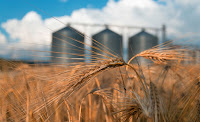Feeding the world’s rapidly expanding population – currently at 7.6 billion and expected to reach 9.8 billion by 2050 – without exacerbating climate change will require the closing of three significant gaps, according to a new report, Creating a Sustainable Food Future.
The gaps highlighted in a recent World Resources Institute (WRI) report involve:
- food supply, simply producing enough to meet rising demand;
- land for food production: The report estimates that if current production rates continue with the same yields, an additional area almost twice the size of India would be required to produce enough food; and
- mitigating increased greenhouse gas emissions likely to be produced by the additional food production needed by 2050.
Searchinger is a Princeton University research scholar who collaborated with an array of international researchers over the past six years to produce the WRI report. A synthesis version was released in December 2018, and the roughly 500-page full report is to be published this spring.
Challenges in feeding 10 billion people by 2050
The synthesis report outlines a variety of options and opportunities to meet the rapidly growing need for nutrition while at the same time working to mitigate climate change. Ultimately, the authors seek to answer the question: “How can the world adequately feed nearly 10 billion people by the year 2050 in ways that help combat poverty, allow the world to meet climate goals, and reduce pressures on the broader environment?”
“If you want to solve climate change, you have to solve this question,” Searchinger says. He points to estimates that agriculture and associated land use change could make up 70 percent of “allowable emissions from all human sources” by 2050 if current practices continue.
“That would basically leave almost no room for any other emissions, so it would basically make solving climate change impossible,” he says. “So we have to figure out a way to do both and figure out a way to produce 50 percent more food with [approximately] two-thirds fewer emissions – so that’s the challenge.”
Read more at Feeding 10 Billion People by 2050 in a Warming World

No comments:
Post a Comment